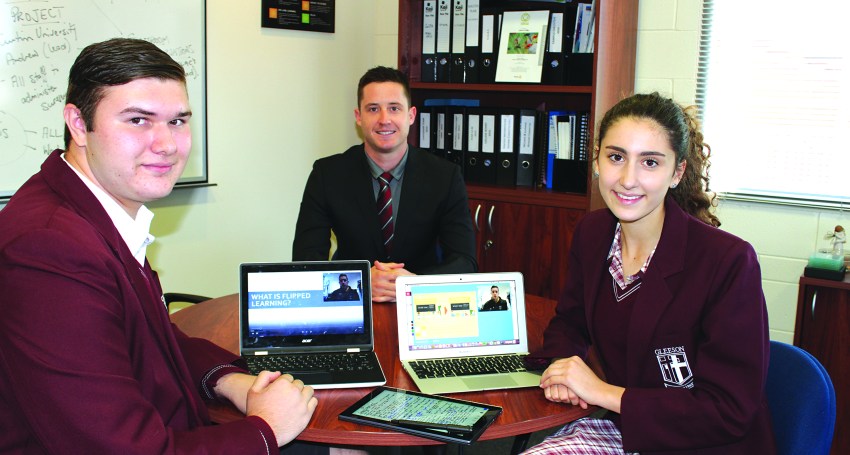Flipping out over new teaching method
News
Like a child with a shiny new toy, Steve Hicks is excited, energised and totally engaged with a different approach to teaching that is gaining momentum across the world.

Together with about 15 other teachers at Gleeson College, Steve is embracing the ‘flipped learning’ model of teaching which, put simply, sees the school work being done at home and homework undertaken at school.
“The traditional classroom is changing – this is definitely the way to go,” the design and technology teacher told The Southern Cross.
Developed by two teachers in the United States about a decade ago, flipped learning has been adopted by whole schools or in the case of Gleeson, trialled by some teachers.
Advertisement
In practical terms it relies on the teacher preparing digital content – usually a short video – which is watched by the student at home.
The student notes important information and prepares clarifying questions about the content in readiness for the following lesson.
In class the teacher then moves straight into addressing the student’s questions, leading to a dynamic, interactive learning environment.
According to Steve, flipped learning offers many learning advantages for the student and means they don’t get bogged down doing hours and hours of homework.
“We’ve all been in classes where we’ve been given homework and when we get home we open up the book and we can’t do it. Perhaps we had a bad day, perhaps the teacher didn’t explain it perfectly on that day, but we don’t know what to do and it becomes an issue.
“Flipped learning requires homework but stops the students from spending hours on homework. They might watch a 10-minute video – they will have to stop, pause and rewind and take notes and that will take about 30 minutes… half an hour of homework where they can be 100 per cent successful.
Advertisement
“If they have questions from the video that is fantastic because they are then prepared for the next day with questions about that work.”
Flipped learning also frees the teacher’s time in the classroom which means they are able to work one-on-one with students who are struggling.
At Gleeson, Steve said parents had been “very supportive and encouraging” of the flipped learning approach, with some commenting they were pleased they could watch the video with their child and assist them if needed. This was not always possible if they had only a text book to guide them.
Students agreed that flipped learning meant ‘better use’ of their homework time, while others said 24/7 access to the videos was helpful for revision or when they were absent due to sickness.
“I enjoy that I can work at my own pace and it’s a lot more relaxed,” said Year 11 student Jordan Altieri.
Fellow student Amelia Delic said it “saved time” in the classroom and it was “much easier” to understand comments from teachers about drafts when they were received via video.
However, as Steve explained, flipped learning was successful only with the support of the school. Producing quality digital content takes time and video facilities are needed.
He said Gleeson was in the process of setting up a dedicated filming booth for teachers and other schools used professional development days to enable teachers to do their filming.








Comments
Show comments Hide comments